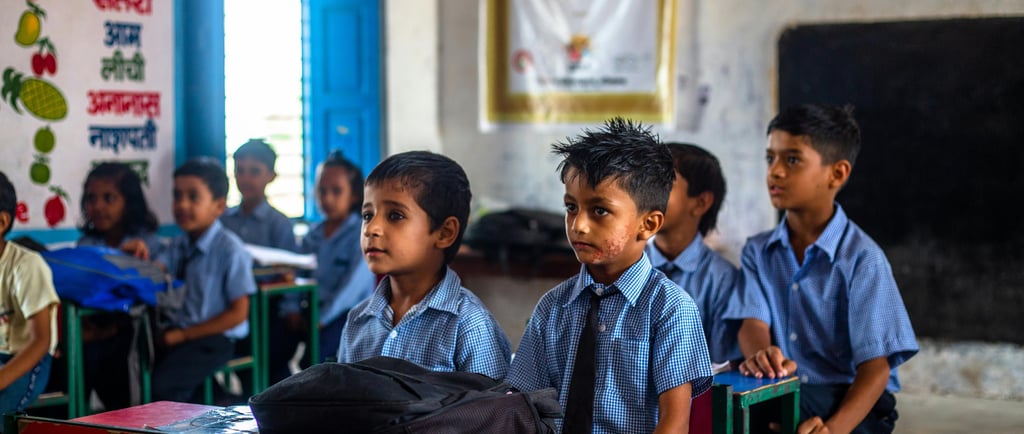Why the Indian Education System Needs an Overhaul
A deep dive into the shortcomings of India’s education system, exploring issues like rote learning, outdated curricula, and inequality, while offering solutions to create a more inclusive and practical learning environment.
11/3/20243 min read


India boasts one of the largest education systems in the world, producing millions of graduates every year. While it has contributed to creating some of the world's brightest minds, there’s no denying that the system faces serious criticisms. Many argue that it emphasizes rote learning, lacks innovation, and often fails to prepare students for real-world challenges. Let’s explore the key reasons why the Indian education system is seen as problematic.
1. Focus on Rote Learning
The Indian education system often prioritizes memorization over understanding. Students are expected to reproduce textbook content verbatim in exams rather than showcase critical thinking or problem-solving skills. This approach stifles creativity and leaves little room for intellectual exploration.
2. Exam-Oriented System
From a young age, students are pressured to excel in standardized exams. Success is often measured by marks and ranks, rather than knowledge or skills. This leads to immense stress, a lack of interest in learning, and in severe cases, mental health issues.
3. Lack of Practical Learning
Practical application of knowledge is limited. While students study complex concepts in subjects like science and mathematics, opportunities to experiment and apply these concepts in real-life scenarios are minimal. As a result, they often graduate with theoretical knowledge but lack the skills needed in the workplace.
4. Outdated Curriculum
The curriculum in many schools and colleges has remained stagnant for decades. It fails to adapt to the rapidly changing global landscape, leaving students ill-prepared for modern industries, especially in fields like technology, environment, and data science.
5. Neglect of Skills Development
Soft skills, critical thinking, and entrepreneurial abilities are rarely emphasized in Indian schools. The rigid system does not encourage exploring passions, taking risks, or pursuing unconventional career paths. Vocational training is also underdeveloped, leaving students without hands-on experience.
6. Inequality in Access
India’s education system is deeply divided between urban and rural areas, as well as private and government institutions. While private schools in cities offer advanced facilities, government schools often lack basic infrastructure, qualified teachers, and resources. This inequality perpetuates the cycle of poverty and limits opportunities for underprivileged students.
7. Teacher-Centric Approach
Classrooms in India are largely teacher-centered, where students passively absorb information. Modern educational practices advocate for student-centric learning, where learners actively participate, engage, and collaborate, but such methods are rarely implemented.
8. Neglect of Mental Health
The relentless competition and high parental expectations can lead to severe mental health challenges for students. Unfortunately, schools rarely prioritize mental health awareness or provide counseling services to help students cope.
9. Limited Encouragement for Research and Innovation
India’s education system often undervalues research and innovation. Students with the potential to explore new ideas are seldom provided with the resources or encouragement needed to pursue their interests. Consequently, the country faces a "brain drain," with many bright minds seeking opportunities abroad.
10. One-Size-Fits-All Approach
Every student is unique, but the system fails to recognize this diversity. It imposes a standardized learning path, leaving little room for individuality or catering to different learning styles.
What Can Be Done?
While the criticisms are valid, there’s hope for reform. Here are some steps that could help improve the Indian education system:
Revise the Curriculum: Update it to include modern advancements and focus on critical thinking, creativity, and practical application.
Promote Experiential Learning: Introduce project-based and hands-on learning to complement theoretical studies.
Invest in Teacher Training: Equip educators with modern teaching methods and ensure continuous professional development.
Enhance Infrastructure: Bridge the gap between urban and rural schools by improving facilities and resources in underserved areas.
Encourage Skill Development: Include vocational training, coding, entrepreneurship, and life skills in the curriculum.
Prioritize Mental Health: Provide counseling services and promote awareness about emotional well-being.
Conclusion
The Indian education system has produced exceptional talent despite its flaws, but it is far from perfect. Transforming it into a more inclusive, innovative, and student-centric model requires collective effort from policymakers, educators, parents, and students. By addressing these challenges, India can unlock the full potential of its youth and pave the way for a brighter future.
